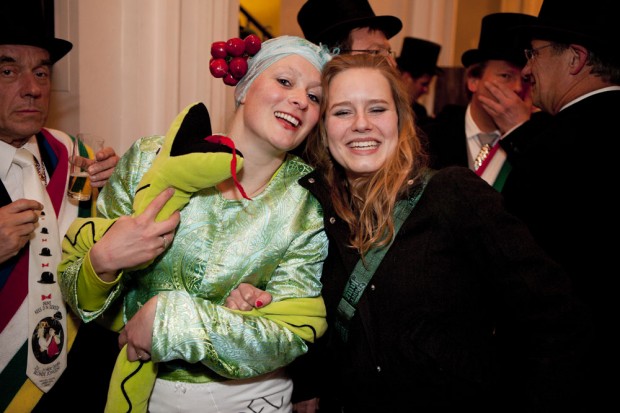An iconographic and text archive related to communication, technology and art.
Carnival, by nature means lots of parties and of course copious drinking. The more drink is taken, the bigger the “Facebook Problem” becomes. You walk into a crowded bar or party, lift your camera and everyone in front of you starts posing and smiling, producing the kind of image in the past associated with the social pages in magazines, but now the stock that fills up Facebook.
☛ Martin Parr’s blog: “The Facebook Problem” February 2012.
While on an assignment in Hellmond, Holland, renowned Martin Parr reflects on the relationship between partygoers and photographers.
This problem gets worse when people are younger, for once you get into middle age the backdrop activity of constantly shooting everyone, everywhere diminishes. Young people need to fill their Facebook pages with ever more photos of them having a good time, with virtually everybody they know.

For all that, Parr doesn’t condemn Facebook altogether:
Every month something like 6 billion photos are loaded onto Facebook. If you glance through some of these, the majority fit into the same pattern. Last New Year’s Eve, 750 million photos were posted in one night alone. Why do we need all these photos? Is it the inherent insecurity we all have? Can you imagine, for example visiting somewhere like a tourist honeypot without this being recorded? Not all aspects of the Facebook trend are entirely negative: with the explosion of phones with cameras and photo sharing sites like Flikr the interest in photography is growing. It is, after all, the greatest democratic art form of our time. In past times people collected autographs, souvenirs, or perhaps programmes. Now the only currency is a yet another smiling photo.
One may read Martin Parr’s full comment over by his blog. He doesn’t update it often, but it’s always interesting to read his thought about photography and the places he visits while traveling. The previous entry was about Russian Christmas Parties.
Previously on Aphelis: “Bored Couple” by Martin Parr, 1993
- By Philippe Theophanidis
- on
- ― Published in Art, Communication, Photography
- Tagged: community, Facebook, Martin Parr, representation
